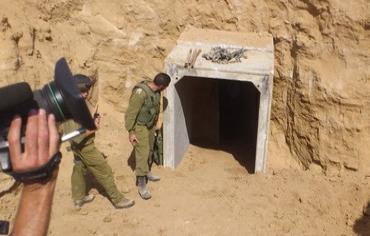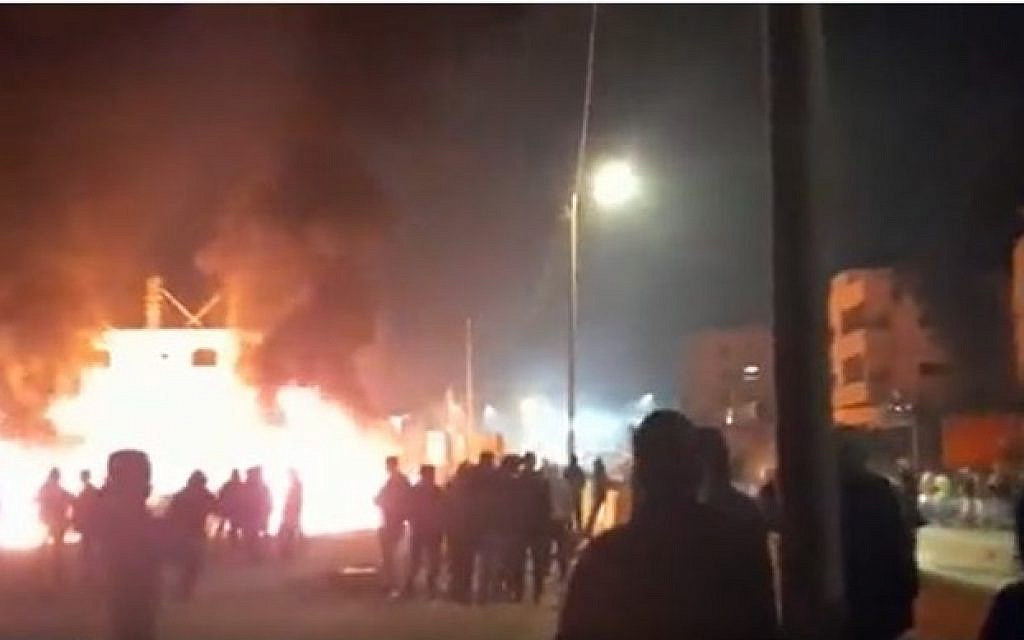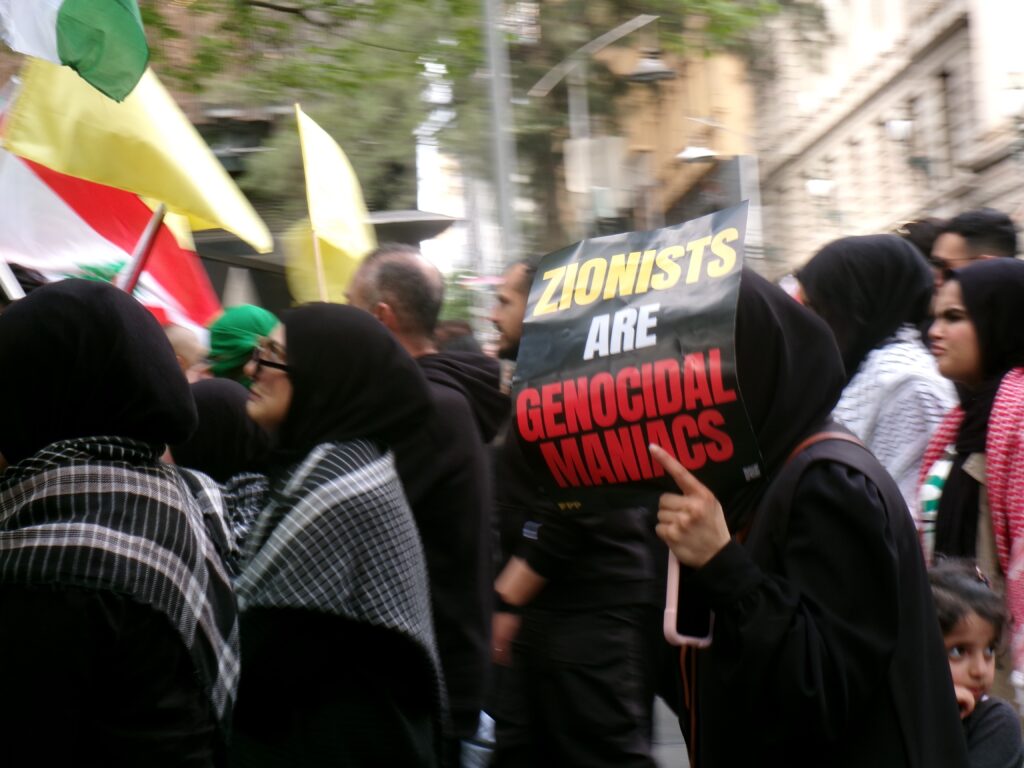UPDATES
Hamas faces isolation and its own domestic “resistance” movement
November 6, 2013 | Allon Lee

As the Palestinian Authority (PA) receives international plaudits for participating in peace talks with Israel and a domestic fillip for securing the release of a second batch of long-term Palestinian prisoners held in Israeli jails, Hamas, its Islamist rival in Gaza is at a low ebb, battling declining popular support and regional influence.
The deterioration in its fortunes is described in the Times of Israel by Avi Issacharoff who writes that “This isn’t the same terror organization – it’s now a movement more occupied with its survival as a ruling government.”
Issacharoff notes that the Egyptian military’s coup against the Muslim Brotherhood-affiliated President Mohamed Morsi in July left Hamas reeling. The military’s subsequent crackdown on smuggling tunnels into Gaza in retaliation for its collaboration with the Morsi Government has left Hamas bleeding US$230 million a month in revenue and seeing a shortage of fuel and goods into the Strip.
Similarly, Haaretz‘s Zvi Bar’el writes that regional fluctuations have taken its toll:
It was kicked by Iran and then “sentenced to death” by Egypt, in the words of a senior Hamas official. Jordan won’t let the organization open an active branch there and Qatar sends small change with a promise of more. But with the Rafah crossing to Egypt open fitfully (it’s been closed for the last three days) and Israel impeding the entry into the Strip of building materials, the aid from Qatar has little impact.
Iran, Bar’el writes, has not yet forgiven Hamas for “criticizing the Assad regime” and recently rebuffed an attempt by Hamas’ political chief Khaled Meshal to visit Teheran, telling him: “We’re busy with the Syrian crisis and with building our international relations, so perhaps it would be better to postpone your visit.”
Furthermore, Bar’el writes, Hamas is unable to quarantine the economic downturn it faces and “unemployment has rebounded to 2008 levels of around 43%, and exports are just 9% of production. Adding to the misery, the UN Relief and Works Agency recently announced it will have to scale back aid to around 10,000 Palestinian refugees in the Strip. Gazans increasingly complain about the soaring prices of basic goods, the shortage of building materials and the hardship posed to thousands seeking to leave the territory as a result of the Rafah crossing closures.”
Barel writes that the “walls in Gaza are now filled with graffiti calling for an end to Hamas rule, while Palestinian media outlets in the West Bank report Gazans’ dissatisfaction with the Hamas regime and their loss of personal security.”
Moreover, the likelihood of a Hamas-Fatah reconciliation is as remote as ever.
Also threatening Hamas’ carefully controlled social order in the Strip is the Tamarod (Rebellion) Gaza movement. Named after the Egyptian grassroots protest group that helped overthrow Morsi in July, it is calling for the overthrow of Hamas and trying to organise mass demonstrations scheuled for November 11, the anniversary of Yasser Arafat’s death.
Tamarod Gaza’s website is “advising Gazans to obtain a week’s food supply and remain at home, in anticipation of attacks by Hamas forces.”
With Tamarod claiming (probably unrealistically) that it expects one million protestors, Gaza’s Interior Minister Fathi Hamad has suggested assassinating the group’s leaders.
The challenges it must surmount to overthrow Hamas are considerably more difficult than those experienced by its Egyptian counterpart. Whereas the Egyptian military was a rival seat of power to President Mohammed Morsi, here Hamas is both the government and military power.
But Tamarod Gaza is no friend of Israel, with Barel listing one of its grievances against Hamas being that it has become “a protective agent helping Israel,” a claim either divorced from reality or suggesting a militancy that believes in violence against Israel at all costs.
In response to this parlous state of affairs, Gaza PM Ismail Haniyeh has tried to reassert the organisation’s relevancy and recently delivered a fiery speech reminding all and sundry of Hamas’ credentials and achievements (see AIJAC’s Update which featured an important analysis of the speech).
According to the Jerusalem Post‘s Yaakov Lapin, Hamas is consolidating after last November’s war with Israel by rebuilding “its terrorism infrastructure…through summer camps, charities and student associations.”
Issacharoff notes that despite the decline in smuggling tunnels, arms and raw materials that can be used for military purposes are still being brought in while Hamas has been increasing local production of M-75 rockets that can reach Tel Aviv.
Whilst it is true that Hamas has been restraining the firing of rockets from Gaza at Israel – according to a Maariv report over 200 rockets were launched at southern Israeli cities in 2012, but only 40 have been fired so far in 2013 – on the West Bank it is agitating for the breakout of a third intifada.
As Lapin explains:
…in the Hebron area, a complex security arena where Jews live adjacent to Palestinians, the IDF and the Shin Bet (Israel Security Agency) have been able to thwart Hamas attempts to carry out attacks.
According to a source from the IDF’s Judea Brigade, 80 percent of security suspects arrested in the southern West Bank are Hamas members.
“Terrorism is being guided from Gaza. They [Hamas] don’t want to break the cease-fire in Gaza, so they extend a long arm to here, to Judea and Samaria… We’re not letting them lift their heads, neither Hamas in Hebron nor Hamas in the outlying villages,” the source said.”
Hamas’ terror activities are also evolving. Some are receiving the international media’s attention, such as the exposure of a 1.8km concrete tunnel built by Hamas stretching from Gaza into Israel, likely intended to kidnap Israelis as hostages or conduct terror attacks in Israel if and when required. The tunnel was built using 800 tons of concrete that had been brought into Gaza to meet civilian needs but which was misappropiated by Hamas for military purposes, exactly as Israel warned it would be. For an insightful analysis on how humanitarian aid into Gaza is misued, read a recent article by David Bedein here.
Also noteworthy is a new terror method adopted by Hamas, with Issacharoff reporting that PA officials have foiled a plot by Hamas to launch drones fitted with explosives at Israeli targets.
Still, there is not much self-satisfaction in Israel over Hamas’ struggles, which Bar’el suggests is because “Hamas, in its distress and in a bid to regain the attention of the Arab states, may be tempted to [lob] rockets at Israel for the express purpose of evoking the automatic Israeli response. That would enable Hamas to disrupt the peace talks between Israel and the Palestinians and to set new ground rules for the cease-fire while forcing Egypt to change its policies.”
And with Israel still making sure that Gaza has adequate fuel and cooking gas and authorising the passage of 380 to 420 truckloads of consumer goods into Gaza every day, Hamas may not want to admit it but its hated enemy, the Jewish State, currently seems to be its best ally.
Allon Lee
Tags: Israel





